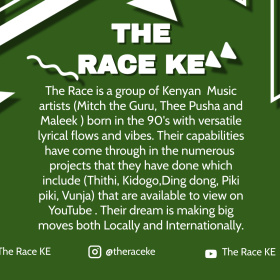Creating e-learning music products as a revenue stream
The Organisation for Economic Cooperation and Development (OECD) has noted a substantial rise in online learning in the wake of the COVID-19 pandemic.[1] Online course platforms such as Udemy reported a 425% enrolment rise, with a 55% increase in course creation by instructors to meet surging demand.[2] And, though students around the world are heading back to physical classroom spaces, the growth in the e-learning industry shows no sign of slowing down, as people “continue to readjust to life in the pandemic economy … by [picking] up new skills as they look for ways to be productive.”[3]
In this article, we look at how South African musicians can take advantage of this boom in online learning, by creating online music courses and other e-learning products.
E-learning vs e-teaching
Before delving into the specifics, it is important to clarify that we are not discussing the ‘live’ teaching of music in this article – for example, giving Zoom or Skype music lessons. For a comprehensive rundown of teaching opportunities, including online teaching and tutoring gigs, please consult our article on teaching opportunities for South African musicians.
Rather, this article is focused on e-learning products, such as short courses, which you create and then sell on various online platforms for students to complete in their own time and at their own pace.
There have been many studies debating the relative advantages and drawbacks of online learning, but focusing the discussion through the lens of potential revenue streams reveals the following important considerations.[4]
Advantages of online course creation:
- You only need to create the course once, but then can sell it multiple times. This is very different to regular teaching/tutoring gigs, where payment is usually received only when a session is completed.
- Unlike regular teaching, you are not constrained by location. You can access learners from around the country, and around the world, – and there are no travel costs involved.
- With online courses, the learning is (or can be) entirely asynchronous. This means you don’t have to worry about schedule clashes, or missing out on potential students because you are unable to meet a certain time/date for their lessons.
Disadvantages (especially compared to ‘regular teaching’) include:
- Though most online platforms do not charge a fee to host your course (see next section), there are production costs involved in creating your course.
- The flip side of being able to access learners from all over the world is that you will face massive competition in marketing your online course. Although the demand side of the market is much higher, the same holds true for the supply side. This is why developing niche and specialised music courses is a good idea (see next section).
- The boom in demand for and supply of e-learning courses has resulted in downward pressure on course prices. Online platforms frequently have to run special deals and discount offers to drive up course subscription and this can directly impact your revenue share.[5]
Video: Udemy is the world’s largest e-learning platform, hosting more than 250 000 online courses.
Online music courses
To get a sense of the size and rate of expansion of the e-learning market, this industry has grown from $107 billion in 2015 to $250 billion in 2020,[6] and is expected to each $1 trillion by 2027.[7] In terms of sheer numbers and growing demand, this market is predicted to draw professionals from across all industries – including artists, such as musicians, looking for ways to diversify their sources of income in the context of the COVID-19 pandemic.
There are many excellent ‘how to’ resources available online, such as this one from the Balance Small Business and this one from eLearning Industry, both of which give helpful pointers about how to construct your course and market it effectively.
However, you should bear in mind the following all-important guidelines gleaned from academic research:[8]
- Personality and professionalism go a long way towards course success. It is important to let learners get a sense of who you are from the course material, and this needs to be backed by high-quality e-learning material (videos, audio tracks, PDFs, etc.).
- Ensure that you determine the cost of your course realistically. Do some market research and discover what your competitors are charging. If you were to match their price, how many courses would you need to sell in order to realise a profit? Is this a reasonable expectation?
- Some specific insights about course videos can be taken from Springer research conducted in 2021, which employed semi-structured interviews and eye-tracking technology to map student responses. Key indicators of success include simplicity of interface, short duration of individual videos (maximum 5 minutes), and the ability for students to monitor/track progress through the learning process.[9]
- Finally, offer something new to the market wherever possible. There are literally thousands of ‘introduction to music production‘ or ‘beginner’s courses’ online. Rather, leverage any specific or regional skills and localised knowledge you may have; what niche offering can you provide? For example, at the time of writing, the highest-selling Ableton introductory courses on Udemy had about 5 000 students, and the most popular Gypsy Jazz Guitar course had 1 300 students, but there are currently no courses focusing on the maskandi guitar style, or how to produce kwaito or amapiano music.
In terms of which e-learning platform to use to sell your course, there are many options available to you. This City Press article provides a rundown of some of the most popular sites, as does this 2021 piece from Foundr.
- At the top end of the scale, Kajabi charges a hefty monthly fee to host your course (starting at R1 800), but does offer a range of excellent tools and marketing services to help ensure the success of your course.
- Udemy is the world’s most established platform, with more than 250 000 available courses, but – though it is free to host your course on this platform – you may only receive as much as 37% of the revenue generated from your course.[10]
- Though they have less of an established presence than Udemy, platforms such as Podia, Thinkific and Teachable are also free to use, and offer more favourable revenue shares to instructors.
Finally, note that – in addition to a course platform – you may require other channels to advertise your course effectively, such as a YouTube channel where you provide partial lessons for free, or a Patreon page where you paywall your e-learning content for an existing audience.
For instance, South African guitarist Billy Monama has partnered with Indigenous African Music, in addition to running a lesson-based YouTube channel, while Derek Gripper has a Patreon page that demonstrates an excellent example of how to paywall and tier e-learning content appropriately. Please consult our individual articles about YouTube, Patreon and other emerging social media platforms for more information.
Video: Billy Monama hosts a series of South African guitar tutorials on his YouTube channel.
Custom e-learning products
If making extensive online courses doesn’t appeal to you, then consider custom e-learning products, such as tabs, transcriptions or lessons that focus on a single song.
These can be added-value products to existing revenue streams, such as your website or YouTube channel,, and can promote fan engagement through the process of taking requests and sharing the method of learning/transcribing the song. For a successful example of this approach, see GuitarNick’s Patreon page or Marcel Ardans’ website.
As we can see from the Revenue Streams for Music Creators in South Africa 2022 report, the different online services mentioned in this article are beginning to provide real revenue opportunities for music creators.
The following figures are average monthly earnings:
- Designing e-learning materials: R3 427
- Online masterclasses: R2 869
- Music transcription: R5 367
Ilker Koksal, writing for Forbes magazine in 2020, declared: “It’s a fact that online learning is the future and will undoubtedly replace land-based learning in the future.”[11] Time will tell whether this prediction proves true or not, but, for now, the e-learning industry is undoubtedly a fast-growing space that could function as a supplementary revenue stream for South African musicians.
Resources and citations
- [1] OECD. (2020). The potential of online learning for adults: Early lessons from the COVID-19 crisis. Accessed on November 24, 2021: https://www.oecd.org/coronavirus/policy-responses/the-potential-of-online-learning-for-adults-early-lessons-from-the-covid-19-crisis-ee040002/
- [2] Business Wire. (2020). New Udemy Report Shows Surge in Global Online Education in Response to COVID-19. Accessed on November 24, 2021: https://www.businesswire.com/news/home/20200430005243/en/New-Udemy-Report-Shows-Surge-in-Global-Online-Education-in-Response-to-COVID-19
- [3] Pakapol, M. (2021). Udemy: Heading Towards the Perfect Storm. Digital Innovation and Transformation. Accessed on November 24, 2021: https://digital.hbs.edu/platform-digit/submission/udemy-heading-towards-the-perfect-storm/
- [4] Da Costa, C. (2018). How To Use Online Courses To Generate A 6-Figure Passive Income. Forbes. Accessed on November 24, 2021: https://www.forbes.com/sites/celinnedacosta/2018/09/28/how-to-use-online-courses-to-generate-a-6-figure-passive-income/?sh=54f9ac4447aa
- [5] Learning Revolution. (2021). Can you still make money with online courses? Accessed on November 24, 2021: https://www.learningrevolution.net/make-money-online-courses/
- [6] Malekos, N. (2019). How Much Money Can You Make Selling Online Courses? Learn Worlds. Accessed on November 24, 2021: https://www.learnworlds.com/how-much-money-can-you-make-selling-online-courses/
- [7] Truex, L. (2019). How to Make Money With Online Courses. The Balance Small Business. Accessed on November 24, 2021: https://www.thebalancesmb.com/how-to-make-money-with-online-courses-4148198
- [8]Wang, Y. and Song, J. (2021).What Makes a Massive Open Online Courses (MOOCs) Excellent? An Investigation in Business Analytics Courses. AMCIS 2021 Proceedings (4). Accessed on November 24, 2021: https://aisel.aisnet.org/amcis2021/is_education/sig_education/4
- [9] Coşkun A., Büyükkeçeci E. & Töre-Yargın G. (2021). Exploring Success Criteria of Instructional Video Design in Online Learning Platforms. Game + Design Education. Springer Series in Design and Innovation (13). Accessed on November 24, 2021: https://doi.org/10.1007/978-3-030-65060-5_31
- [10] Udemy. Instructor Revenue Share. (2021). Accessed on November 24, 2021: https://support.udemy.com/hc/en-us/articles/229605008-Instructor-Revenue-Share
- [11] Koksal, I. (2020). The Rise Of Online Learning. Forbes. Accessed on November 24, 2021: https://www.forbes.com/sites/ilkerkoksal/2020/05/02/the-rise-of-online-learning/?sh=45f9efb72f3c
This article is part of the Revenue Streams for African Musicians project, supported by UNESCO’s International Fund for Cultural Diversity in the framework of the UNESCO 2005 Convention on the Protection and Promotion of the Diversity of Cultural Expressions, the Siemens Cents4Sense programme, Siemens Stiftung, Goethe-Institut, the National Arts Council of South Africa and Kaya FM.
Editing by Kalin Pashaliev






























Comments
Log in or register to post comments